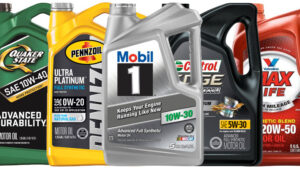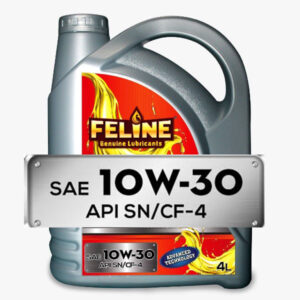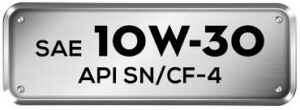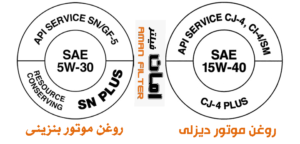How to buy the right engine oil for your car?
The most essential thing used in car service is engine oil.
Engine oil is one of the main lubricants that play an important role in the combustion cycle. It keeps the engine cool and ensures the correct sealing of the piston rings in the car engine. So join us to learn about all the things this amazing liquid does to our car.
lubrication
Engine oil reduces friction between engine components during the combustion cycle. How ?
By creating a thin layer of oil, engine parts do not rub against each other strongly, and as a result, engine oil reduces wear, friction and tearing of car parts.
Neutralization of acids
During the combustion process, fuel and oxidation of other lubricants cause acid formation and engine oil is responsible for neutralizing these acids.
Mud removal
Engine oil plays an important role in ensuring that the engine block is clean. If mud and debris are not properly removed from the engine, they may lead to blockages in different parts of the car engine block.
Prevent corrosion and oxidation
Other functions of engine oil can be mentioned as “preventing corrosion”. Engine oil protects cylinder blocks from rust.
Did you know that not all engines can run on the same engine oil?
Yes, different engines need different engine oils to function properly.
Car manufacturers recommend engine oil based on the parameters of your car. Remember: “You must be aware of the grade of engine oil required by the car.” Knowing this information will help you get the best performance from your engine.
*The right oil increases the life of the car engine*

Let’s get to know the numbers written on the engine oil canMost people either change their car oil themselves or take their car to a car repair shop or dealership and ask professionals to change the oil. In any case, one of the most important aspects of changing oil is choosing the right oil.
Choosing the right oil does not just mean choosing between mixed or conventional oil. In fact, you should also pay attention to the numbers on the engine oil label.
You have definitely come across something like “10W-30” or “5W-20” when buying engine oil, but you may never have known about these numbers.
Even if the oil was changed by a professional, you will usually be given a sheet that shows when the oil was changed and the numbers of the oils used in your vehicle.
Now the question that arises: What do these numbers represent?

In short, the numbers before and after W indicate viscosity and weight. The letter “W” itself stands for Winter. As you know, viscosity means the thickness of a fluid. In the case of engine oil, it indicates the thickness of the oil under certain temperature conditions.
Oil viscosity

The first number
The number on the left side of W refers to the viscosity of the oil when temperatures are low. The number on the right side of W refers to the viscosity of the oil at higher and hotter temperatures.
If the first number is low, it means you have thin oil. Whenever the ambient temperature is colder, it is better to have thin oil in your engine. Otherwise, the thicker oil will flow throughout the engine and make it harder to lubricate the components.
The second number
The second number depends on two things. The temperature of the engine and the heat of your living environment. If you live in a tropical area with high heat such as the southern regions of the country, the second number should be high and it means that the oil is thick. It is good to have thick oil at high temperatures because the oil does a better job of lubricating engine components.
If you check the manual of your vehicle, you will find that the manufacturer has informed you of the appropriate viscosity grade of oil to use in the vehicle. Be sure to keep in mind, however, that the manufacturer doesn’t always take into account where you live or where you might drive your vehicle.
Classification of engine oil services
In the United States, the American Petroleum Institute (API) sets standards for measuring the properties of passenger car engine oils.
Cars of the 1920s, 1950s, 1970s, etc. need a different formula of engine oil. This led to the emergence of different classifications of engine oil, which will also change in the future.
Gasoline engines
The current service classification for today’s gasoline vehicles is SN PLUS, which was introduced in 2018 by API.
For new vehicles (2019 and newer), if you want to make sure the motor oil you’re buying has this classification, refer to the “API Donut” icon that can be found on all motor oil bottles.
- For older cars (2018 and older), you can also use motor oils with the “SN PLUS” classification.
But you can also use older classifications depending on when your car was made.
The following table refers to these categories.
Categorizing the years of making the situation
SN PLUS can be used for today’s gasoline cars and current older models
SN applicable to current 2018 and older gasoline vehicles
SM can be used for current 2011 and older gasoline vehicles
SL can be used for 2004 and older current gasoline vehicles
SJ can be used for gasoline vehicles from 2001 and older
SH should not be used for vehicles manufactured after 1996. outdated
SG should not be used for vehicles manufactured after 1993. outdated
Do not use SF for vehicles manufactured after 1988. outdated
SE should not be used for vehicles manufactured after 1979. outdated
SD should not be used for vehicles manufactured after 1971. outdated
SC should not be used for vehicles manufactured after 1967. outdated
Do not use SB for cars built after 1951. outdated
SA should not be used for cars built after 1930. outdated
For this reason, all the oils you buy now must be equal to or better than the previous standards like SG, SF, SJ, SL and SM.
Check your vehicle manufacturer’s manual to find the right oil for your car and at least 2 other specifications that match your vehicle’s engine.
Don’t just look for the brand when choosing an oil. Your manual should recommend an oil that has a specification such as “SN API Compliant”.









Leave a Reply